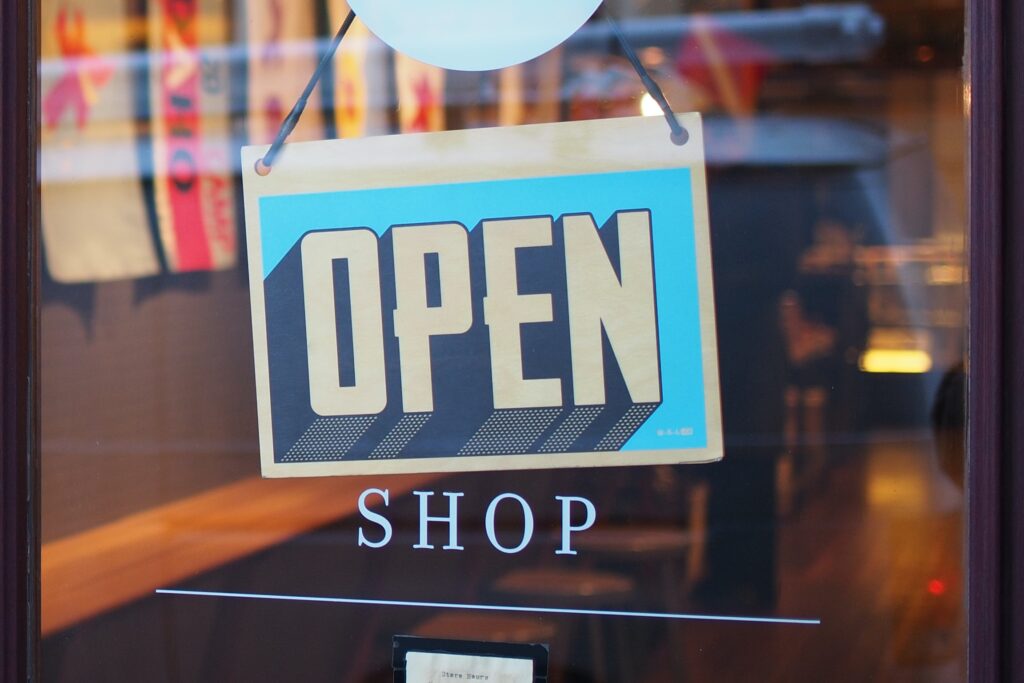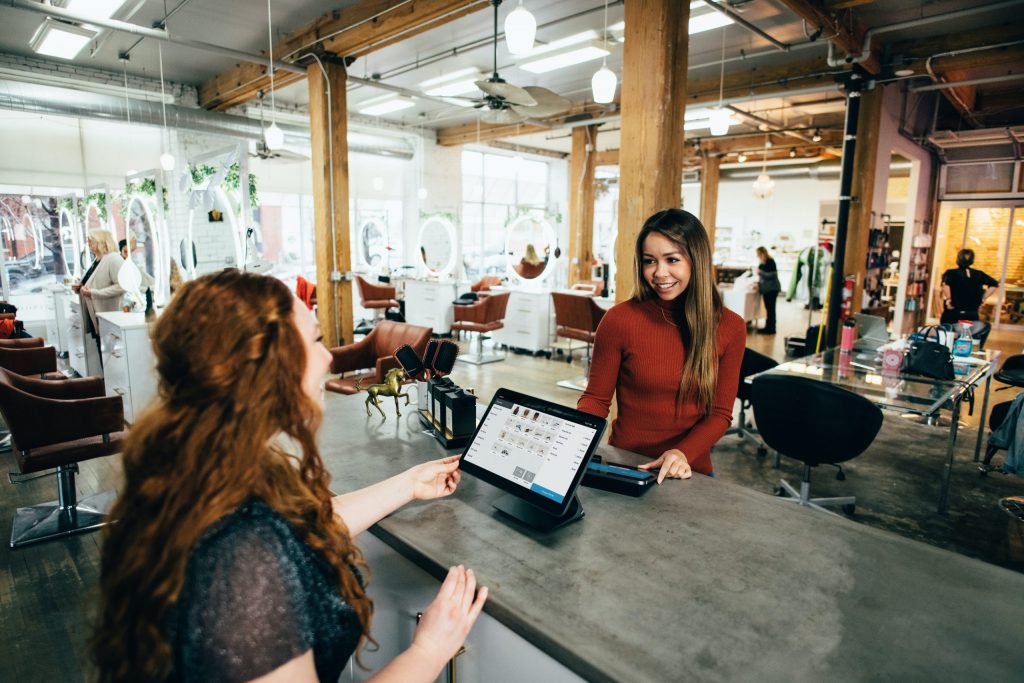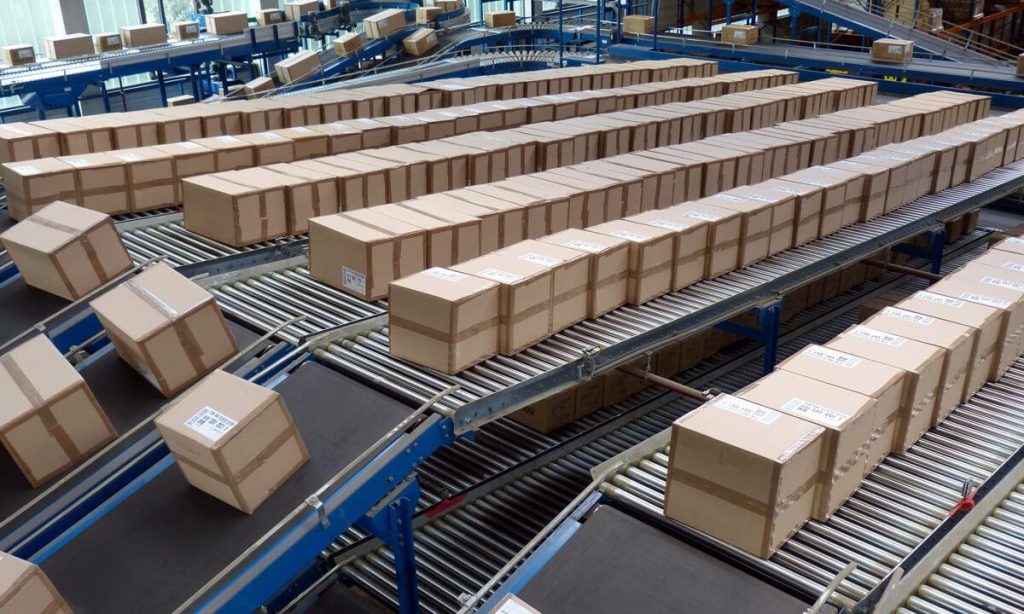Want to know about the factors that will impact business in 2022 and beyond? Let’s navigate emerging trends and predictions shared by our expert partners across all verticals in commerce: supply chain, eCommerce, customer experience, and B2B.

The State of Commerce
After the rise of eCommerce during the COVID-19 outbreak, the shift in online behaviours and customers’ expectations created a make-it-or-break-it moment for Merchants. Most companies mainly focused on ensuring business survival and continuity in 2021. Some efforts included ramping up their digital commerce strategy to deliver great customer experiences. However, it was not all easy.
According to a Forrester annual study on commerce and customer trends, “technology was the biggest hurdle to address across the eCommerce journey in the past year.” While brands recognize the importance of meeting digital experience expectations, they’re misaligned with how to prioritize their digital commerce investments.
In 2022, there are still businesses with unique needs that find themselves held back by inadequate technology, lack of eCommerce strategy to grow, and missing synchronization across key business touchpoints, offline and online.
eCommerce trends for 2022: How Can Your Business Grow?
Want expert guidance on how to grow your business and make better technology investments this year? We asked top commerce experts and industry leaders to share their advice for brands getting ready for a successful 2022.
Here are the biggest trends set to transform the future of commerce in 2022 by eCommerce industry experts:
1. Personalization of the Buying Experience at its best

Julia Jackle
CEO & Co-Founder of Creative971
Consumer behavior has altered dramatically from the beginning of the year, when the pandemic was at its peak. Who’d have thought that necessities like grocery would be the first to go completely digital?
Clearly, automation is here to stay and will continue to grow over time, making consumer shopping experiences much easier and eventually transforming. Consumers expect an experience that meets them where they are, when it is convenient, through omnipresent communication. Across all platforms, artificial intelligence and robust customer service will lead the way. This particularly means implementing smarter payment solutions, such as “Buy Now, Pay Later” models via our partner “Tabby” or also Crypto currency payments.

Christophe Davy
General Manager of ShopiShopa Consulting
Mobile Conversion
No more excuses for lower conversion rates on mobile, brands need to offer powerful mobile-first experiences on their sites.
2. A Great B2B Strategy Is Critical

Chris Mattingly
Co-Founder of Sparklayer
B2B eCommerce is growing rapidly and we’re starting to see many Direct to Consumer (DTC) brands exploring this for the first time or investing more heavily into their B2B operation. The key to this is creating a more connected and more customer-first ordering experience to make ordering online as self-service as possible. We believe 2022 will see this pace of B2B growth accelerate with major eCommerce platforms also adapting their own products to better support this trend.
5. Live Shopping Is Next Up

Christophe Davy
General Manager of ShopiShopa Consulting
“eCommerce is commerce, and brands need to explain and showcase their products to their clients, as if they were on a QVC show.”

Dan Conboy
Director of Ecommerce Strategy of Statement
From what I am observing, I expect to see live shopping become a prominent eCommerce sales channel that will continue to develop.
Live shopping – or livestream shopping – is digitizing the home shopping experience through apps, websites, and social media channels. Businesses can now promote, sell and provide real-time communication, reviews, and recommendations on products all in one place.
Delivering an immersive shopping experience, live shopping is keeping viewers engaged, creating a deeper connection with the audience. Creating an experience that closely resembles in-person shopping but with the added comfort of consumers being in their own surroundings. Removing many of the barriers that exist between customers and brands when purchasing online, brands can distinguish themselves from competitors online.
A livestream from a favourite brand is a great way to offer viewers product tutorials. For instance, showing clothing on a model or answering questions as well as providing exclusive discounts, product recommendations, and reviews.
AR and VR In 2022
With technology continuing to evolve at such a pace, the use of augmented reality (AR) and virtual reality (VR) are likely to emerge to make the shopping experience even more immersive. Eventually, shoppers might even be able to have virtual face-to-face conversations with a brand just as if they were in a store.
Influencer Marketing
Live shopping also gives brands the opportunity to tap into influencers with millions of followers through collaborations. While big-name influencers and celebrities are expensive to hire, brands can create better engagement and connection with audiences at a lower cost by using influencers with a smaller but dedicated following such as micro and nano-influencers.
Incorporating any new innovation into a brand needs to be carefully considered but, with the right approach, live shopping has the potential to add value to brand awareness, customer service and, ultimately, growth in orders.
As live commerce increases its reach, it could well move into new sectors such as traditional healthcare, engineering, finance, and maybe even B2B industries.

6. The Right eCommerce Tech Stack Makes A Difference

Aaron Quinn
CEO of eHouse Studio
Headless Progressive Web App (PWA)
Going headless opens up a new world of eCommerce opportunities. To illustrate, it enables you to retrieve data and content from backend systems and pull it into any UX on any device or platform using APIs. This is key in a world where front-end technology and the way people want to shop – from voice commerce to augmented reality – are diverse and changing rapidly.

Yuli Valderrama
Marketing Director of Pangea Consultants
Cloud Applications Lead The Way
Pangea Consultants believes that ERP technology will drive further growth to companies in 2022, bringing more powerful features to thrive in the new normal. Some of the most important trends we consider are more businesses shifting their data to cloud-based eCommerce apps to manage their operations cost-effectively and more securely.
Also, the automation processes are expected to grow more intelligently, delivering more dynamic and less artificial solutions, as well as more ERP systems integrated with IoT since organizations are looking for enhanced asset management and real-time insights.

Shelly Socol
CEO & Co-Founder at One Rockwell
The Future of Shipping and Logistics
The word “shipping” has become obsolete and effectively replaced with “when” as the major driver of the consumer experience. Shipping and the “when” completely impacts the overall consumer experience and incorporating a pleasant and informed seamless shipping experience will be a big factor for 2022 with BOPIS to delivery notifications.
The stakes and expectations for “when?” are higher than ever — especially in urban areas. We’re seeing a 15-20 min grocery delivery service from fridgenomore and gopuff. In fact, FastAF enables delivery of all goods in 2 hrs.
Our 2022 forecast simply says: Speed up, Everyone.

Krish Iyer
Vice President, Strategic Partners & Industry Relations at Auctane
Seamless Returns
I believe that brands should capitalize on the trend of easy, no-hassle returns in 2022. This has obviously been a trend for a few years, with some retailers operating with “sugar returns,” or keeping it philosophy. This is easier said than done, however, many apparel retailers need to build a degree of friction into their returns processes to support their financial/demand model.
Vendor Diversification
Another trend is both vendor (and shipping carrier, by extension) diversification. From a sourcing standpoint, the Suez Canal accident had cascading effects through the summer and fall for retailers sourcing from Southeast Asia, in particular. Thus, diversifying with vendors around the globe became critical in having inventory on hand.
From a shipping carrier standpoint, utilizing a single source carrier was the way most retailers had done so for many years, with the mantra of “the more you ship, the more you save.” This has, however, fallen out of favor with many carriers stretched with volume and retailers utilizing same-day and regional parcel carriers.
For more details on the future of shipping, check out Shopify’s The Future of Commerce Report. Get insights on how to modify your fulfillment strategy to respond to supply chain concerns and transparent delivery times.

7. Omnichannel Commerce: Blurring the line between online and offline retail

Christophe Davy
General Manager of ShopiShopa Consulting
Multi-channel Selling
More than ever, clients are everywhere, so brands must sell their products everywhere.

Melissa Speranza
Director of Client Services of One Rockwell
2021 brought a lot of learnings and takeaway trends that brands need to focus on in 2022:
Social Commerce
Social platforms and social shopping took off in 2021 and will continue to grow exponentially in 2022. Social platforms such as TikTok, experienced the most app downloads during holiday 2021 nodding to the significance of social media and the importance of digital content.
With social platforms, brands have the ability to create waves and moments of delight that can have a real impact on their overall image. Social platforms allow for both a two-way and individualized channel for brands to communicate and interact with their consumers. Social commerce is all about authenticity and presence. We are just at the beginning of this trend and it’s potential will continue to explode in 2022.
Discovery Commerce
2021 showed us that the line between everyday life and shopping has become further blurred. A trend that will continue into 2022. Brands are hyper-focused on creating experiences where consumers are discovering them vs. actively seeking them out.
Every moment is a moment for discovery or buying. 2021 showed us that a consumer has a higher chance to buy from a new brand than ever before simply by discovery.
8. Leverage Video In Your Marketing Strategy

Danielle Lobo
Marketing Communications Coordinator of Blue Link Associates
One of the biggest trends I would encourage brands to leverage to grow in 2022 is the use of video. The Covid-19 Pandemic has accelerated the use of the Internet and people are shopping online now more than ever before. Brick-and-mortar stores are struggling to compete due to the pandemic disruption, and online stores are struggling to offer the in-person experience that shoppers enjoy.
As a way to combat this, videos are a great way to allow consumers to experience a product virtually through Social Media Apps, and TikTok. Whether driven by influencers or user-generated content, people enjoy watching product explainers or reviews as a way to engage with the product before purchase. We also see 5G mobile phone networks becoming available which will allow for a seamless viewing experience while on the go.
For example, here at Blue Link, we use video to show the sophisticated function of our ERP software both with live-action and animated explainer videos. Both types of videos help consumers understand our product, get insight into company culture, and view customer success stories. Video content proves to be a great way to connect with your consumers and give them an understanding of who your company is and what it has to offer.
9. Reputation over Reviews

Holly Kuldell
Marketing Assistant of Avex Designs
Research is showing that customers are lacking trust in DTC brand’s reviews. Customers are turning to third parties, such as blog articles, social media posts, and YouTube videos, created by credible sources other than the brand themselves to fully understand the products.
One thing eCommerce brands can do to counteract the distrust is making sure product descriptions are detailed, precise, and reel the customer in while painting a complete picture of the product.
Sell Where Your Customers Are
More brands will start utilizing social tools such as TikTok and Instagram to create easily shoppable content for avid social media users.
10. Product and Shipping Transparency
With the continuing supply chain issues, customers are even more curious about which products are actually available and when they can get their hands on them. Due to this, merchants will start showing product availability and shipping turnaround times, and offer even faster shipping options when possible in order to get ahead of competitors.
Virtual Shopping Assistants
Virtual assistants were quite popular during the holiday season and will continue to show up in 2022 to help shoppers quickly find what they are looking for. These assistants create the facade of shopping in-store with the help customers would normally receive from sales representatives.

Melissa Speranza
Director of Client Services of One Rockwell
Virtual Try-On
Virtual Try-on has matured and improved significantly over the past couple years. It now not only provides accurate images of ourselves but also better AR technology that gives us relevant guidance and advice as we try on.
Virtual Try-On allows for sampling of products leading to less returns and customer service issues boosting bottom lines and driving efficiencies. This will continue to be a strong trend in 2022 as the technology advances further.
Privacy & 1st Party Data
We see “the dance with the meaning of privacy” continuing into 2022. The backlash against data mining and identification led to the “privacy movement” of 2019 through 2021…and yet…. it is still TBD on what privacy really means to us. Yes, the new Google technology can’t identify me…?:
Ok, but they do know it’s someone who looks, talks, dresses, socializes, and dreams just like me…is that really privacy? As consumers we have not yet decided what we are comfortable with brands and advertisers knowing about us, nor how acceptable it is for them to show and target what they know, nor how much we are comfortable acknowledging “we know” that “they know”, nor how we “should” respond… and really feel about this value of (privacy).
With this intense debate still being worked through; it will be important for brands to know how and when to collect data as part of the overall consumer experience. What we can say is that it should be handled delicately as a brand builds its community. Stay tuned in 2022 as this topic unfolds…

This is how Commerce in 2022 will look like
Planning ahead for 2022 and choosing the right technology to implement is the key to growing your business this year. But of course, that’s always easier said than done.
In a nutshell, here is a summary of the key trends VL OMNI and our expert partners have identified:
The Future of B2B eCommerce Looks Promising
According to B2B trend predictions by Shopify Plus, brands can expect to see augmented reality, AI-driven personalization, self-service buying portals, and more leading the way in 2022.
Before jumping in or expecting results from B2B eCommerce, merchants must understand how different B2B is from direct to consumer (D2C) selling. For instance, in our B2B eCommerce considerations guide, we dive into the myriad of B2B factors to consider to sell online and grow at scale.
Keep Omnichannel Selling Top of Mind
Brands should consider shifting to an omnichannel approach to bridge the gap between traditional retail and eCommerce. We speak about the improvements your brand needs to make now for the future in our Omnichannel Commerce article.
Think about seamless integration to operate at peak efficiency
To avoid major failures in your operations (e.g., during high-volume sales periods), share your data broadly throughout your organization. This allows your team to have visibility on that data, allowing them to see holes or flaws in your systems before they happen.
Your ERP, CRM, WMS, POS system, etc. need to be sharing the same up-to-date data on customers, inventory, products, delivery, and more. This is possible through strategic integration that fits the needs of your business.
 D365 Business Central
D365 Business Central Netsuite
Netsuite


